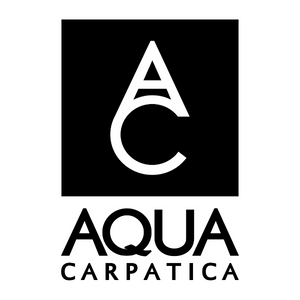That place is Tenuta Stella, a modern winery in the heart of Collio, in northeast Italy.

Here, in Scriò, a hamlet of Dolegna del Collio, they have chosen to focus on three local white grapes: Ribolla Gialla, Malvasia and Friulano.
Erika, who hails from Piemonte, is the oenologist, technical and marketing manager at Tenuta Stella, a passion project that reflects glass entrepreneur Sergio Stevanato’s vision. Erika’s husband Alberto Faggiani (below) is the agronomist.

Quality and authenticity are the key words that have guided the production and activity since the start in 2009. The two go hand in hand, they believe. “To have authentic wines, the search for excellence must play an equally important role: hence the decision to favour quality over quantity... abandoning the idea of massive production which would mean sacrificing its identity,” is how they put it.
Production is currently between 4,000 and 6,000kg/ha; the 15ha of vines producing about 50,000 bottles annually. The ambition is 70,000 bottles a year from 17ha in the next four to five years.

The vineyards are in the highest part of the Collio, at heights between 120 and 270m above sea level, cultivated organically on terraces with guyot training systems.
The entire estate consists of a single body of 38ha, mostly woodland. They started with 5ha of Friulano and Malvasia, and extended around the main body of the winery, corresponding to today’s offices, tasting rooms and barrique cellar. In 2018, Sergio – a Friuli native – decided to expand the property by purchasing 5ha and a second structure used to vinify the grapes, in Scriò. Then, in the summer of 2022, he added a further 5ha of vineyard area in the hills, in the Lonzano area.
The hallmark of the wines is great structure and rich flavours – the kind of wines that pair well with a variety of local dishes.
With Erika, I tasted the latest releases and discussed the different techniques used for each grape – including MLF and mulberry barriques.
“These grapes permit the full expression of what is this land and so my goal was to announce the main characteristic of Ribolla Gialla, Malvasia and Friulano,” she declares.
Friulano 2022 Collio DOC

Produced from Friulano (formerly Tocai Friulano) grapes, this fresh and fruity wine is fermented and aged in steel; it owes its longevity to its long maturation on lees before bottling in August and releasing the following spring. That’s longer ageing than usual for a Friulano from Collio.
The destemmed grapes are macerated for three to four hours in the press prior to squeezing, settling and spontaneous fermentation. Fermentation is at 16-18°C maximum. Ageing on lees is for 10 months.
“I think this is one of the most representative wines of the wine cellar,” Erika comments. “Friulano is a wine that I like a lot because… it is the most interesting grape here in Friuli Venezia Giulia and we are able to give a personal interpretation to it.”
The main topic of discussion around this wine is the use of MLF in white wines. It sets the style for Tenuta Stella’s Friulano and other white wines. They seem slightly bigger, more generous, and less lean than many of the more acid-driven white wines from the region thanks to the lees ageing and malolactic conversion.
'MLF gives a kind of complexity'“It’s something that is typical of every vintage,” Erika says on the topic of MLF. “When I came here from Piemonte, where we have a completely different style of winemaking, you know that malolactic fermentation on white wines is not so well accepted, but it happens here. With time I started to proceed to this step, because I think it gives a kind of complexity.”
She now embraces it for all her white wines, including the sparkling Ribolla Gialla.
“With a high pH, the malolactic fermentation starts easily,” she says. “But because of the organic management (of the vineyards), we have a lot of microflora that comes from the vineyard. And I think that if we want to take the best from the vineyard, we have to take the best also from the microflora that comes from the vineyard.”
Malvasia 2022 Collio DOC

The winery, in one of the highest points of the Collio, has one mulberry tonneau which Erika uses for a portion of the estate’s Malvasia varietal. She says it enhances the wine’s “body and varietal notes”.
Tenuta Stella makes about 6,000 bottles of this wine every year (slightly less than the Friulano). The handpicked grapes are macerated in the press for three to four hours. After pressing, they are left to settle in stainless-steel tanks before the fermentation starts with native yeasts.
The fermentation at 16-18°C can last 40 to 50 days. “We love this kind of slow fermentation because it gives more complexity to the nose in our opinion,” Erika says. “Of course, there is some danger to get stuck, but we don’t bottle early in the spring, so the wine can restart to ferment the residual sugar on its own.”
When the sugar level drops to about 40g/L, 50% of the dirty wine is racked to wood – a percentage that has been creeping up in recent vintages. Most goes into French 500L tonneaux (a mix of first and second fill) for MLF and to “increase the body of the wine”. But Erika also uses her one and only mulberry barrel for “roundness”.
A little also goes into a pear barrique but, she says, “at the moment, I think that mulberry is more interesting. Pear has a different impact and I don’t know if it’s the right way”.
Sometimes Erika rotates the wine in wood, moving it to the mulberry barrel for two months’ exposure. She likes the different tannins that come from mulberry. “We want to increase this kind of wood inside the wine cellar, but it’s quite impossible because it’s not so easy to find,” she says.
The wine is aged for a total of 10 months before blending, and it ages in bottles for six months before release.
Erika adds: “It’s very interesting as a wine for ageing.”
Ribolla Gialla Riserva 2021 Collio DOC

Tenuta Stella produces fresh, sparkling and skin-contact wines from its key grape, Ribolla Gialla. Currently there are 3-4ha in production, growing to 5ha next year.
First released in 2018, the Ribolla Gialla Riserva is fermented on skins in large oak barrels with native yeasts for about 20 days and left to macerate for a further 10 days.
Regarding the use of skin contact in this wine, Erika says: “The goal is to extract everything from the bunches, then we press manually.”
After a week of clarifying in a steel tank, the wine goes to used French tonneaux for a year and then the total production is put in a 15hl barrel for a further 12 months.
Erika says: “I like this wine very much and I understand that this, for me, is the right way to drink Ribolla Gialla as it’s similar to the taste of the grape in the vineyard.”
The colour of the wine is also similar to the colour of the grape bunches when they are harvested at the end of September and beginning of October.
Erika then reveals they have been experimenting with other kinds of wood, such as mulberry and pear. She says the evolution in pear is very quick and “it’s not the right way”.
She likes the way used oak adds roundness to the Ribolla but, she says, “it needs a lot of time to reach that kind of roundness because of the tannins”.
Erika is also a fan of long-ageing in bottles. The Ribolla Gialla Riserva aged for 21 months in bottle. “The ageing in the bottle is very important for this kind of wine,” she says.
Production is about 2,000 bottles per year.
The differences
I enjoy all the wines, appreciate their differences and tell Erika it must be wonderful having the opportunity to focus on three very interesting and distinctive white grape varieties. I ask about the main differences when they come into the cellar.“The main difference is the Friulano – it is characterised by a lower acidity than the others. So, the danger is to lose freshness,” she replies. “But it’s very delicate on the nose and on the palate. It is not as elegant as the Malvasia but is very interesting to work with this grape. Another characteristic – from the vineyard – the period in which you decide to make the harvest is very important. When this grape reaches the right maturation, it needs to be harvested immediately.
“For the Malvasia, the main characteristic is that it is completely different depending on the vintage. So, the goal is to maintain good quality during the different vintages.
“Ribolla Gialla is the most rustic grape that we have. It is less elegant than Friulano and Malvasia but it’s very interesting because of the tannins. I like a lot the tannins and so I needed to feel it in the wine. Even with the classic wine, I used to blend a small percentage (5-10%) of macerated wine to feel these tannins.”

 English
English French
French



.png)


.png)





